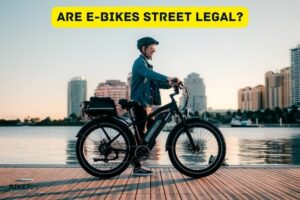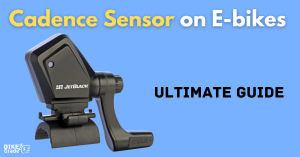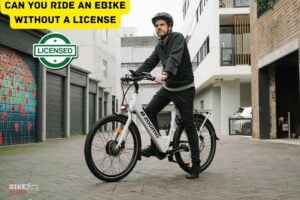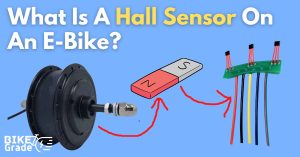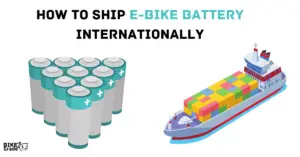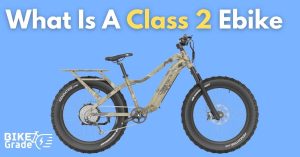Difference Between Class 2 And Class 3 Ebikes
The main difference between a Class 2 and Class 3 eBike is the maximum assisted speed they are able to reach. Class 2 eBikes have a maximum assisted speed of 20 mph while Class 3 eBikes can reach up to 28 mph. Class 2 eBikes are pedal-assist only, while Class 3 eBikes have the option of throttle-powered assistance.
Class 2 eBikes:
Class 3 eBikes:
Class 2 eBikes are limited to a top speed of 20 mph and are only pedal-assist, making them ideal for recreational and leisure riders. Class 3 eBikes offer the option of throttle-powered assistance, allowing for greater speeds and a more powerful motor, making them better suited for commuters and long-distance riders.
| Feature | Class 2 eBikes | Class 3 eBikes |
|---|---|---|
| Maximum Assisted Speed | 20 mph | 28 mph |
| Assistance Type | Pedal-assist only | Pedal-assist and throttle-powered assistance |
| Maximum Motor Wattage | 750W | 1000W |
| Road Usage Legality | Not allowed in all states | Allowed in all states |
| Ideal Rider Type | Recreational and leisure riders | Commuters and long-distance riders |
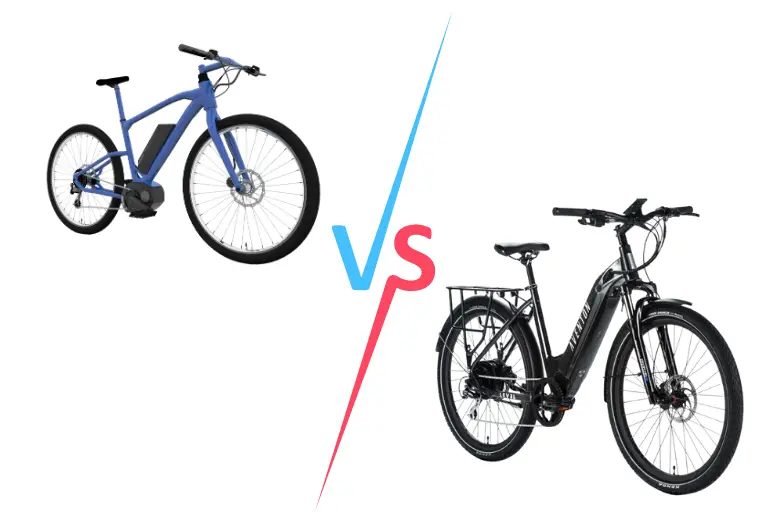
Main Difference Between Class 2 and Class 3 eBikes
Main Difference Between Class 2 and Class 3 eBikes
The main difference between a Class 2 and Class 3 eBike is in the maximum assisted speed they are able to reach and the type of assistance they offer.
Class 2 eBikes:
- Max assisted speed of 20 mph
- Pedal-assist only
- Max motor wattage of 750W
- Not legal on roads in all states
Class 3 eBikes:
- Max assisted speed of 28 mph
- Pedal-assist and throttle-powered assistance options
- Max motor wattage of 1000W
- Legal on roads in all states
Class 2 eBikes are limited to a top speed of 20 mph and are only pedal-assist, making them suitable for recreational and leisure riders. Class 3 eBikes provide the option of throttle-powered assistance for greater speeds and a more powerful motor, making them ideal for commuters and long-distance riders.
Features of Class 2 eBikes
- Maximum assisted speed of 20 mph
- Pedal-assist only
- Maximum motor wattage of 750W
- Not allowed for use on roads in all states
Class 2 eBikes are ideal for recreational riders who don’t need the extra speed and power of a Class 3 eBike. They are pedal-assist only, and have a maximum motor wattage of 750W. They are not allowed for use on roads in all states.
Maximum Assisted Speed
Class 2 eBikes have a maximum assisted speed of 20 mph, while Class 3 eBikes can reach up to 28 mph.
Class 2 eBikes:
- Max speed: 20 mph
- Assist type: Pedal-assist
- Max wattage: 750W
- On roads: Not allowed
Class 3 eBikes:
- Max speed: 28 mph
- Assist type: Pedal-assist or throttle-powered
- Max wattage: 1000W
- On roads: Allowed
Class 2 eBikes are best for recreational riders while Class 3 eBikes offer greater speeds and are better suited for long-distance riders.
Pedal-Assist Only
Class 2 eBikes are pedal-assist only and have a maximum assisted speed of 20 mph. They have a maximum motor wattage of 750W and are not allowed for use on roads in all states. They are ideal for recreational and leisure riders.
Class 3 eBikes have a maximum assisted speed of 28 mph and offer the option of pedal-assist and throttle-powered assistance. They have a maximum motor wattage of 1000W and are allowed for use on roads in all states. They are better suited for commuters and long-distance riders.
Maximum Motor Wattage
Class 2 eBikes have a maximum motor wattage of 750W, while Class 3 eBikes have a maximum motor wattage of 1000W.
- Class 2 eBikes have a maximum motor wattage of 750W
- Class 3 eBikes have a maximum motor wattage of 1000W
The higher motor wattage of Class 3 eBikes allows them to achieve higher speeds and provide more powerful assistance than Class 2 eBikes.
Road Usage Laws
Road usage laws for eBikes vary by state. Generally, Class 2 eBikes are not allowed for use on roads in all states, while Class 3 eBikes are allowed.
Features:
- Class 2 eBikes: max speed of 20 mph, pedal-assist only, max motor wattage of 750W
- Class 3 eBikes: max speed of 28 mph, pedal-assist and throttle-powered assistance, max motor wattage of 1000W
Class 2 eBikes are best suited for recreational and leisure riders, while Class 3 eBikes are better for commuters or long-distance riders.
Features of Class 3 eBikes
- Maximum assisted speed of 28 mph
- Pedal-assist and throttle-powered assistance
- Maximum motor wattage of 1000W
- Allowed for use on roads in all states
Class 3 eBikes offer more speed and power than Class 2 eBikes, making them ideal for commuters and long-distance riders. Featuring throttle-powered assistance and a maximum motor wattage of 1000W, they provide a smooth and efficient ride.
Maximum Assisted Speed
The maximum assisted speed of Class 2 eBikes is 20 mph, while Class 3 eBikes can reach 28 mph. Class 2 eBikes are limited to pedal-assist, while Class 3 eBikes offer both pedal-assist and throttle-powered assistance.
Features:
- Class 2 eBikes: Maximum assisted speed 20 mph, pedal-assist only, maximum motor wattage 750W, not allowed on roads in all states.
- Class 3 eBikes: Maximum assisted speed 28 mph, pedal-assist and throttle-powered assistance, maximum motor wattage 1000W, allowed on roads in all states.
Class 2 eBikes are better suited for recreational and leisure riders, while Class 3 eBikes are ideal for commuters and long-distance riders.
Pedal-Assist and Throttle-Assisted
Class 2 eBikes are limited to 20 mph and provide pedal-assist only, while Class 3 eBikes offer both pedal-assist and throttle-powered assistance, with a maximum assisted speed of up to 28 mph.
Maximum Motor Wattage
- Class 2 eBikes: 750W
- Class 3 eBikes: 1000W
Class 2 eBikes are limited to 750W of motor wattage, while Class 3 eBikes can reach up to 1000W. This allows Class 3 eBikes to have more powerful motors and reach faster speeds.
Road Usage Laws
Road usage for both Class 2 and Class 3 eBikes vary by state. Generally, Class 2 eBikes are not allowed on roads in all states, while Class 3 eBikes are.
Class 2 eBike Road Usage:
- Maximum assisted speed of 20 mph
- Pedal-assist only
- Maximum motor wattage of 750W
- Not allowed for use on roads in all states
Class 3 eBike Road Usage:
- Maximum assisted speed of 28 mph
- Pedal-assist and throttle-powered assistance options
- Maximum motor wattage of 1000W
- Allowed for use on roads in all states
The different specifications and road usage requirements make Class 2 eBikes ideal for recreational and leisure riders, while Class 3 eBikes are better suited for commuters and long-distance riders.
Suitability of Class 2 and Class 3 eBikes
Class 2 and Class 3 eBikes are suitable for different riders.
Class 2 eBikes:
- Max. speed of 20 mph
- Pedal-assist only
- Max. motor wattage of 750W
- Not allowed on roads in some states
Class 3 eBikes:
- Max. speed of 28 mph
- Pedal-assist and throttle-powered
- Max. motor wattage of 1000W
- Allowed on roads in all states
Class 2 eBikes are best suited for recreational and leisure riders as they can only reach a top speed of 20 mph and are pedal-assist only. Class 3 eBikes are better suited for commuters and long-distance riders due to the option of throttle-powered assistance, higher speeds, and more powerful motors.
Class 2 eBikes are ideal for Recreational and Leisure Riders
Class 2 eBikes are ideal for recreational and leisure riders due to their pedal-assist only motor and maximum assisted speed of 20 mph. They offer:
- Maximum assisted speed of 20 mph
- Pedal-assist only
- Maximum motor wattage of 750W
- Not allowed for use on roads in all states.
Class 3 eBikes, on the other hand, are better suited for commuters and long-distance riders due to their higher speeds and more powerful motor. They offer:
- Maximum assisted speed of 28 mph
- Pedal-assist and throttle-powered assistance options
- Maximum motor wattage of 1000W
- Allowed for use on roads in all states.
Class 3 eBikes better suited for Commuters and Long-Distance Riders
Class 3 eBikes are better suited for commuters and long-distance riders due to their higher speeds, more powerful motors, and the option of throttle-powered assistance.
Features of Class 3 eBikes:
- Max. assisted speed of 28 mph
- Pedal-assist and throttle-powered assistance options
- Maximum motor wattage of 1000W
- Allowed for use on roads in all states
FAQ
What are the differences between Class 2 and Class 3 E-bikes?
Does the motor power on a Class 3 e-bike exceed that of a Class 2 e-bike?
Is pedal assistance required for a Class 3 e-bike?
Conclusion
The significant difference between Class 2 and Class 3 eBikes is the maximum assisted speed and the assistance modes available. Class 2 eBikes offer maximum speed of 20mph and are pedal-assist only, while Class 3 eBikes provide up to 28 mph powered by pedaling or throttling. The main consideration in choosing between the two eBikes is the type of riding that is intended.

